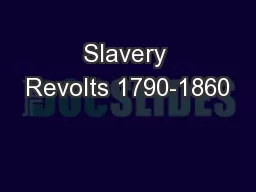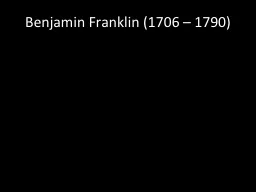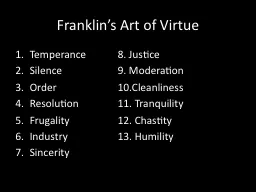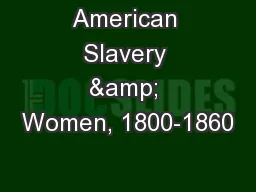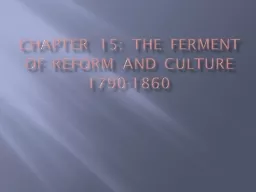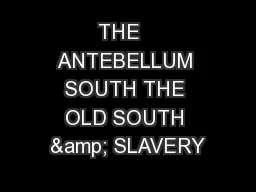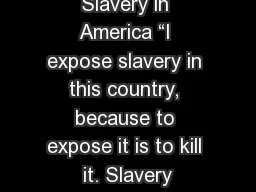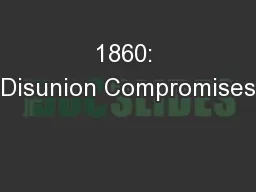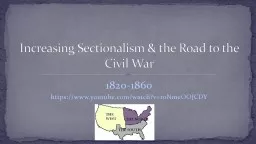PPT-Slavery Revolts 1790-1860
Author : natalia-silvester | Published Date : 2016-12-12
By Emily Wilson EW What we will be discussing Intro to slavery during this time period Generalization during the time Slavery maps Both active and passive methods
Presentation Embed Code
Download Presentation
Download Presentation The PPT/PDF document "Slavery Revolts 1790-1860" is the property of its rightful owner. Permission is granted to download and print the materials on this website for personal, non-commercial use only, and to display it on your personal computer provided you do not modify the materials and that you retain all copyright notices contained in the materials. By downloading content from our website, you accept the terms of this agreement.
Slavery Revolts 1790-1860: Transcript
Download Rules Of Document
"Slavery Revolts 1790-1860"The content belongs to its owner. You may download and print it for personal use, without modification, and keep all copyright notices. By downloading, you agree to these terms.
Related Documents

